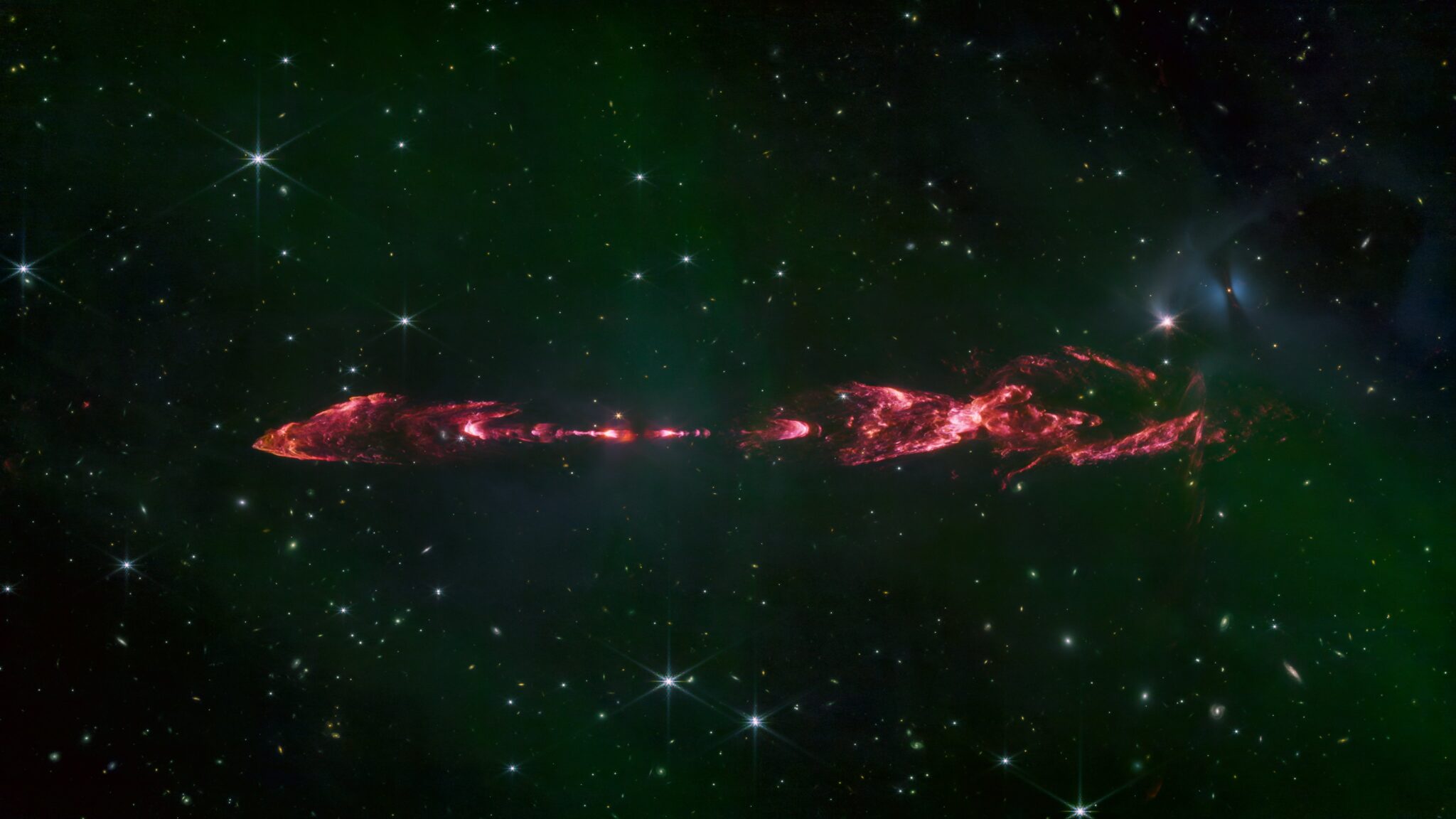Our Sun is more than four billion years old. But if you could go back in time and photograph the moment of its birth, you would see something similar to the impressive image created by the James Webb Space Telescope. It shows a young star in the constellation Orion, ejecting powerful streams of matter.

The photo shows that the process of birth and growth of luminaries is extremely explosive. Shock waves and high-energy jets similar to those captured in the picture are natural phenomena accompanying the birth of a new star called HH212. It is located at a distance of about 1300 light-years, not far from the three bright stars of the famous Orion Belt. The image taken by the James Webb Telescope shows massive gas emissions, which, according to scientists, regulate the process of star formation.
The age of HH212 is estimated at about 50 thousand years. Scientists believe that the Sun at the beginning of its existence could look similar. Jets of gas, presumably, help the star not to get out of control during the accelerating rotation around its axis. According to calculations, the jet has a length of 1.6 light years and spreads at a speed of about 100-150 km/s. From this we can conclude that emissions began about 7 thousand years ago.
Unfortunately, the protostar HH212 is not visible in the image of the space telescope. It is hidden behind a dense gas-dust disk. But this does not reduce the effectiveness of the resulting image, once again reminding us how James Webb changes our understanding of space by providing us with its unique views.
In addition, scientists are using a space telescope to explore the mysteries of the early Universe, trying to find new data about its evolution.
Earlier, we reported on how Gaia revealed the tragic future of the Sun.
According to bgr.com
Follow us on Twitter to get the most interesting space news in time
https://twitter.com/ust_magazine

